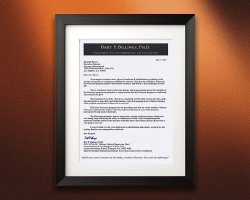What Was Johnson & Johnson's Role in Triggering the Opioid Epidemic?

In May 2019, Oklahoma state attorneys took to the courtroom to prove that the healthcare products company Johnson & Johnson (J&J) was substantially responsible for helping create the opioid epidemic that has killed hundreds of thousands of Americans. As this trial progressed, the testimony provided sharp insight into whether or not opioid manufacturers in general and Johnson & Johnson, in particular, failed to responsibly market their products.
The point of whether they were responsible or not was critically important. If they falsified information, misled both doctors and patients, promoted profits over public benefit or committed some other corporate misdeeds, then they were indeed responsible for taking lives. Instead of a jury trial, the case was finally presented to Judge Thad Balkman to make an adjudication. So it was up to this judge alone to determine whether or not the evidence presented supported the State's claims or those of Johnson & Johnson.
By reviewing some of the evidence, maybe we can come to our own conclusions. Let's take a look.
Expert witness Dr. Andrew Kolodny stated that Johnson & Johnson “did everything it possibly could to get doctors to prescribe more and more opioids.” How could they have done this?
One of the ways prescribers were encouraged to ignore their concerns about prescribing opioid painkillers was through the efforts of ostensible “patient advocate” organizations like the Pain Care Forum or the American Pain Foundation (APF). These and similar groups were paid by opioid producers like Johnson & Johnson to encourage more liberal prescribing of opioids that turned out to be fiercely addictive. Dr. Kolodny said that the APF received more than $5 million from pharmaceutical companies, including $635,000 from J&J.
Some of J&J’s tactics resembled those of drug dealers, such as giving out free samples. J&J promoted the use of coupons that would allow patients to try J&J's Duragesic pain patches at no cost. Duragesic patches contain the highly addictive opioid painkiller fentanyl.
Like many other pharmaceutical companies making and selling opioid painkillers, J&J directed their most avid marketing efforts at high volume prescribers to encourage them to use their products even more liberally. The following image comes from court documents revealing J&J’s plan to expand use of Duragesic. The use of fentanyl for chronic back pain instead of short term or end-of-life pain was one way the use of these drugs was extended to people who would later become hopelessly addicted to them.

You’ll note in the preceding image that it refers to APS, AAPM and AGS. APS refers to the American Pain Society. AAPM refers to the American Academy of Pain Medicine. AGS refers to American Geriatrics Society.
In 2012, the Senate launched an investigation into several of these groups including APS, APF and AAPM to determine how closely they were tied to pharmaceutical companies. These groups typically describe their missions as being similar to this statement from APS: to bring together “a diverse group of scientists, clinicians, and other professionals to increase the knowledge of pain and transform public policy and clinical practice to reduce pain-related suffering.” If this organization is actually mostly or wholly funded by pharmaceutical companies, you can make a pretty good guess what their advice would be.
It’s also interesting to note that as this 2012 investigation launched, the APF suddenly ceased operations, claiming “irreparable economic circumstances.” Coincidence?
J&J’s Unique Interest in Selling Opioids
As revealed in these court proceedings, J&J had a motivation for encouraging the liberal use of opioid painkillers that almost no other drug company had. They owned a large percentage of the worldwide source of Thebaine, a chemical derived from opium poppies. Thebaine is the opiate used to manufacture many prescription painkillers, including oxycodone and OxyContin.
The company providing this supply of Thebaine was Tasmanian Alkaloids, a J&J subsidiary. This company was sold by J&J in 2016. As of 2017, the company produced approximately 40% of the world’s legal poppy crops. They even developed a new strain of poppy that was perfectly suited to the production of oxycodone: the Norman Poppy.
Therefore, J&J would rake in profits from any pharmaceutical company that increased sales of painkillers using Thebaine. (The other pharmaceutical company involved in producing opioids in Tasmania was GlaxoSmithKline.)
These court proceedings provided deep insights into the way Johnson & Johnson operated in an effort to make sure their drugs made it to as many patients as possible. Unfortunately, this intensive effort to make sales appears to have overwhelmed the natural reluctance of many doctors to prescribe addictive substances.
And apparently, Judge Thad Balkman agreed. In July, this trial came to an end. In August 2019, Judge Balkman directed Johnson & Johnson to compensate the State of Oklahoma $572 million for their deceptive marketing efforts. The figure was later reduced by $107 million.
What do you think? Was $465 million adequate compensation for deceptive marketing of addictive medications?
Sources:
- https://www.bloomberg.com/news/articles/2019-06-11/johnson-johnson-fueled-opioid-crisis-trial-witness-testifies
- https://www.narconon.org/drug-information/opiates-and-painkillers.html
- https://oklahoman.com/article/5633797/opioid-epidemic-expert-testifies-drug-companies-used-front-groups
- https://www.insurancejournal.com/news/southcentral/2019/06/13/529168.htm
- https://www.motherjones.com/politics/2019/06/johnson-and-johnson-opioid-poppies-tasmania-oklahoma-lawsuit/
- https://www.narconon.org/drug-abuse/signs-symptoms-vicodin.html
- https://www.propublica.org/article/senate-panel-investigates-drug-company-ties-to-pain-groups
- https://www.proactiveinvestors.com.au/companies/news/177879/auscann-group-holdings-partners-with-tasmanian-alkaloids-177879.html
- https://www.npr.org/sections/health-shots/2019/08/26/754481268/judge-in-opioid-trial-rules-johnson-johnson-must-pay-oklahoma-572-million
- https://www.npr.org/2019/11/15/779439374/oklahoma-judge-shaves-107-million-off-opioid-decision-against-johnson-johnson


 ®
®